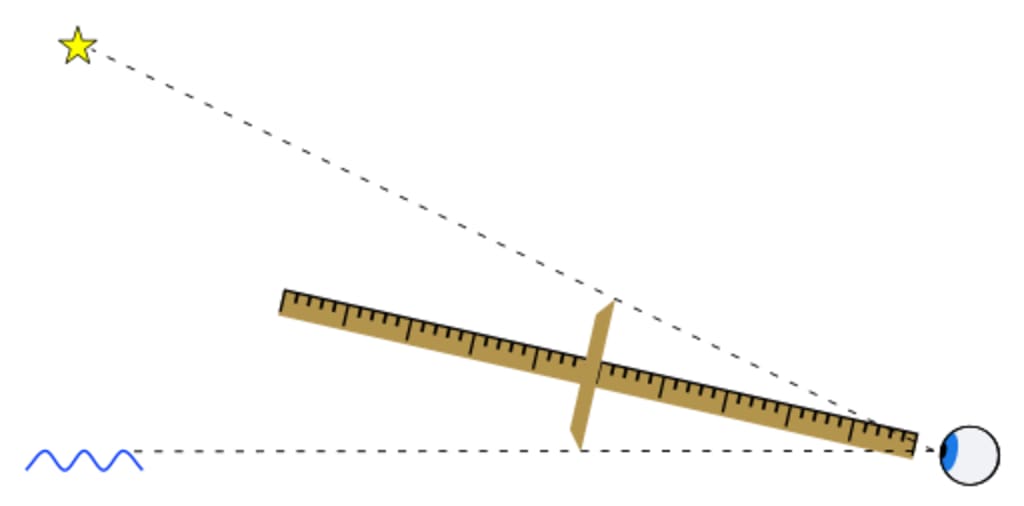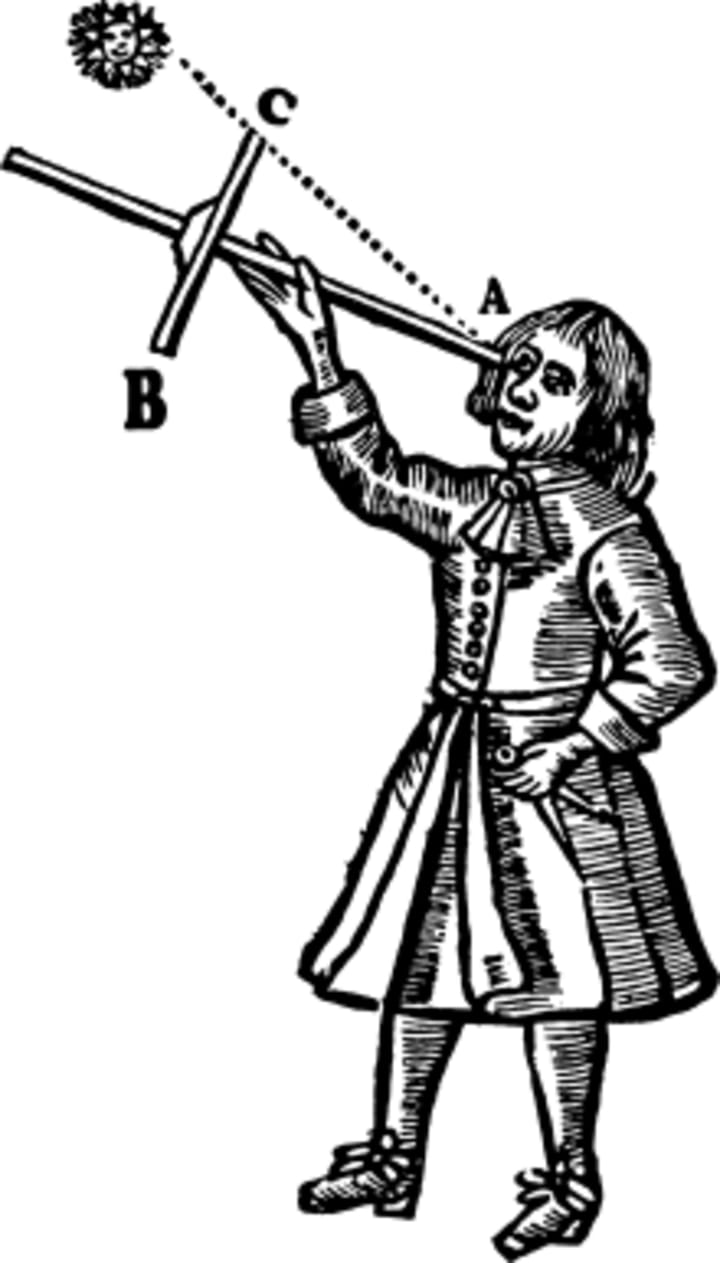The Rabbi Who Found His Way
A Brief History of the Jacob's Staff

I must go down to the sea again
To the lonely sea and sky
And all I ask is a tall ship
And a star to steer her by
John Masefield, Sea Fever
Centuries before satellites and the Global Positioning System(GPS), ship navigators had two options for finding their way on the ocean.
The first was by dead reckoning. A ship would trail a pre-measured line, noting the time to completely play out to determine how fast the ship was traveling. For example, if it took six minutes (or 1/10th an hour) to play out a line 1/5th a mile (or 1,056 feet) long meant that the ship was traveling at 0.2 miles in 0.1 hours, or two miles an hour. Using this method along with a compass, a ship could roughly calculate its position.
It was simple enough, but not very accurate. Even small calculation mistakes blossomed into large errors. Varying winds and weather also caused inaccuracies.
The other way Medieval and Renaissance navigators found their way was a technique called ‘running down a latitude.’ With this technique, a ship’s captain would sail to whatever latitude (their position north or south of the equator), then steer along the east-west longitude until they ran into their destination.
The question then became how to keep the ship straight along the east-west longitude. This was answered by a 14th-century French rabbi and two pieces of wood.
Jacob’s Staff
Levi ben Gershon (1288–1344), sometimes known by his Graecized name of Gersonides, is a forgotten but gifted mathematician and rabbi. Responsible for his contributions to the fields of geometry, trigonometry, and logic, it is his invention of the Jacob’s Staff, one of the earliest instruments in celestial navigation, that helped early navigators find their way across the trackless oceans.
The term ‘Jacob’s Staff’ was not used by ben Gershon but by his Christian contemporaries; he used a Hebrew name that translated to ‘Revealer of Profundities’. He described it in the Book of the Wars of the Lord as consisting of:
… a staff of 4.5 feet (1.4 m) long and about one inch (2.5 cm) wide, with six or seven perforated tablets that could slide along the staff, each tablet being an integral fraction of the staff length to facilitate calculation, used to measure the distance between stars or planets, and the altitudes and diameters of the Sun, Moon, and stars.
Older astronomical instruments existed before the Jacob’s Staff that measured the angle between two observed stars, but they were not portable. Gersonides’ simple hand-held device was ideal for use at sea.
The Jacob’s Staff was used to figure out the angle between the horizon and Polaris (the night-time North Star) or the Sun’s noon-time elevation above the horizon to determine a ship’s latitude.
The Jacob’s Staff determined the arc between the measured object and the horizon that allowed the navigator to accurately determine angles and latitude, helping ships to ‘run down the latitude’ more efficiently.

The Jacob’s Staff consisted of a pole marked with graduations (markings used to show points on a scale) for length. The cross-section (BC in the figure above) was called the transom or transversal. The transom slides up and down the main staff.
The user places the main staff against their cheek just below the eye and sights the horizon at the end of the lower part of the transom. Then, by adjusting the cross arm on the main arm until the sun is at the other end of the transom ©, the altitude can be figured by reading the position of the cross arm on the scale on the main staff. This reading is converted to an angle by referring to the value in a table.
Once the latitude was determined, the Jacob’s Staff kept the ship on the latitude. If further observations noted that Polaris appeared to be sinking in the night sky, the ship was veering south; if Polaris appeared to rise, the ship was angling north.
For its portability, the Jacob’s Staff was difficult to use, sometimes requiring the user to stare at the sun during a daylight observation. The user also had to observe the horizon and a star in two different directions while not moving the staff when he looked from one object to another. The staff was also useless south of the equator, where Polaris cannot be seen.
The Jacob’s Staff was one of the earliest instruments used in celestial navigation and may have been used by Columbus to discover the New World.
Jacob’s Staffs were used for 200 years until English sea captain John Davis invented the back staff, which did not require the user to look directly at the sun. Hence, the back staff did not come with the possibility of eye damage from the sun.
About the Creator
Randall G Griffin
I am Pop-Pop, dad, husband, coffee-addict, and for 25 years a technical writer. My goal is to write something that somebody would want to read.






Comments
There are no comments for this story
Be the first to respond and start the conversation.